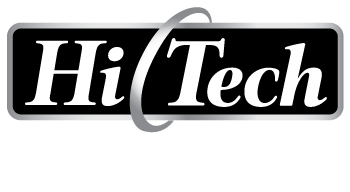Cloud Computing Myths, Best Practices, and Future Trends for Business Growth
- Prevalent myths often lead to misunderstandings about cloud computing, discouraging businesses from using its full potential.
- Cloud computing offers significant benefits, including improved scalability, cost savings, and security.
- Implementing best practices for cloud adoption, such as clear strategy development and continuous optimization, guarantees a successful and efficient transition.
Cloud computing has revolutionized how businesses handle their IT resources, offering unparalleled flexibility, scalability, and cost savings. By uncovering common myths, exploring best practices for successful cloud adoption, and examining current trends, you can better understand how cloud computing can improve your business operations and drive growth.
Understanding Cloud Computing
Cloud computing refers to delivering computing services—such as servers, storage, databases, networking, software, and more—over the internet. You can rent these resources from the cloud providers instead of owning physical servers and other infrastructure. This allows you to scale up or down based on your needs, pay only for what you use, and access your data from anywhere.
Common Cloud Computing Myths
Misconceptions about cloud computing often arise from a lack of knowledge about its complexity and security. Here are a few myths about cloud computing that might be holding you back from using it:
Less Secure than On-Premises Solutions
You might hear concerns about data breaches and unauthorized access, leading you to believe that keeping your data on-site is safer. In reality, cloud providers invest heavily in state-of-the-art security measures that often surpass what you can achieve with on-premises solutions. They employ advanced encryption, regular security updates, and comprehensive threat detection systems.
While cloud providers offer strong security features, you also share responsibility for securing your data. Proper configuration, strong access controls, and regular security audits are crucial to maintaining the security of your cloud environment.
Only Suitable for Large Enterprises
As a small business owner, you might feel that cloud solutions are too complex or expensive for your needs. Cloud computing is, in fact, highly scalable and adaptable to businesses of all sizes.
Many cloud providers offer specialized solutions tailored to smaller businesses, enabling you to leverage the same powerful tools and services as larger companies without the complexity and expense.
Too Expensive
While it’s true that cloud costs can add up, the overall financial benefits often outweigh the expenses. Cloud computing eliminates the need for substantial capital investments in hardware and reduces ongoing maintenance costs. You also avoid energy consumption, physical space, and IT staff expenses.
Proper cost management is key to avoiding unexpected expenses. With the right tools and practices, you can monitor your cloud usage, optimize resource allocation, and control costs effectively. Cloud solutions offer the flexibility to scale your resources based on your actual needs, making sure you only pay for what you use.
Very Complicated and Disruptive
While transitioning to the cloud can be a significant change, modern cloud migration tools and strategies can simplify the process. Cloud providers often offer migration support services to help you move your data and applications with minimal disruption. You can enjoy a smooth transition by working with experts and following a well-defined migration plan.
Proper planning and communication are essential to mitigate potential disruptions. With a structured approach, you can migrate to the cloud without negatively impacting your business operations.
The Best Practices for Adopting Cloud Computing
To successfully adopt cloud computing, it’s essential to follow the practices outlined below:
Develop a Clear Cloud Strategy
Define what you want to achieve with cloud computing—whether it’s improving scalability, reducing costs, or enhancing collaboration. A well-thought-out strategy helps you identify the right cloud services and deployment models for your needs. Engage stakeholders from different departments to make sure the strategy addresses all aspects of your business operations.
Assess Your Existing Systems and Processes
Before migrating to the cloud, thoroughly assess your IT infrastructure, applications, and processes. This evaluation will help you understand what works well and what needs improvement.
Identify which applications and data should move to the cloud and which might be better suited for on-premises solutions. This step makes sure you base your migration plan on a comprehensive understanding of your existing environment.
Implement Strong Security Measures
Security is a top concern when adopting cloud computing. To protect your data, implement strong security measures such as encryption, multi-factor authentication, and regular security audits. Also, regularly review and update your security protocols to address new threats and vulnerabilities.
Optimize Resource Allocation
Use cloud management tools to monitor and optimize your resource usage. Adjust your resources based on actual demand to avoid overprovisioning and unnecessary costs. Implement auto-scaling features where possible to see to it that your cloud environment can handle workload fluctuations efficiently.
Ensure Compliance with Regulations
Make sure that your cloud provider complies with relevant regulations such as GDPR, HIPAA, or PCI-DSS. Implement internal policies and practices to maintain compliance with these regulations. Regularly review and audit your cloud environment to maintain ongoing adherence to compliance requirements.
Train Your Team
Effective cloud adoption requires that your team understand how to use and manage cloud services. Provide training and resources to help your employees become familiar with cloud technologies and best practices.
This training should cover cloud security, resource management, and troubleshooting topics. A well-trained team can better utilize cloud services and contribute to a smoother transition.
Plan for Disaster Recovery
Develop a comprehensive disaster recovery plan to protect your data and enjoy business continuity in case of unexpected events. Cloud computing offers disaster recovery solutions, such as backup and replication services, to safeguard your information.
Test and update your disaster recovery plan regularly to check its effectiveness and alignment with your cloud strategy.
Current Trends in Cloud Computing
The current trends in cloud computing hold exciting developments that could further improve its value for your business. Technologies like artificial intelligence (AI) and machine learning are increasingly integrated with cloud services, offering advanced analytics and automation capabilities.
Edge computing is another trend that allows faster processing and data analysis closer to the source of data generation. This improves performance and reduces latency for applications that require real-time responses.
Sustainability is also a focus, with cloud providers working towards greener practices and more energy-efficient data centers. As these trends are in place, they will shape how your business may use cloud computing and its impact on your operations.
At Hi-Tech Business Systems, we specialize in providing tailored cloud solutions that streamline your operations and drive business success. Contact us today to discover how we can help your business thrive in the cloud.





